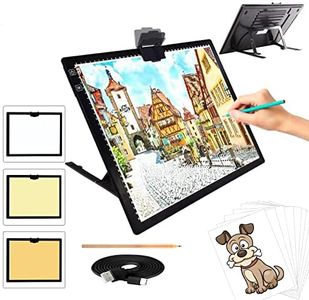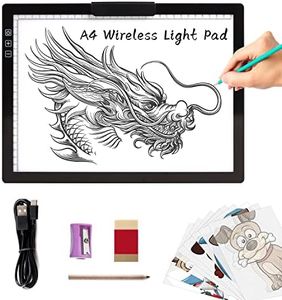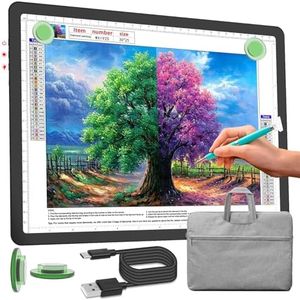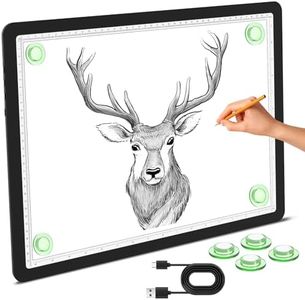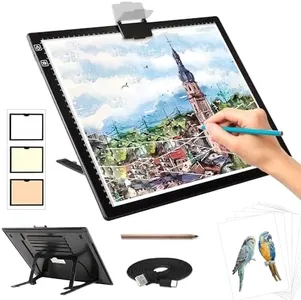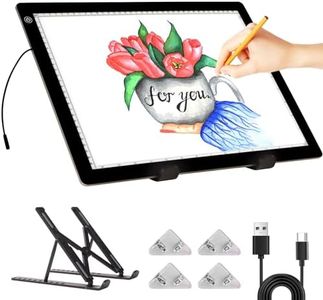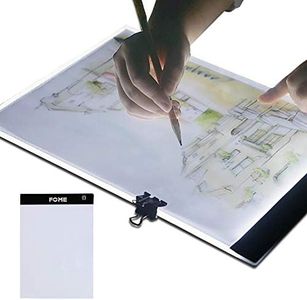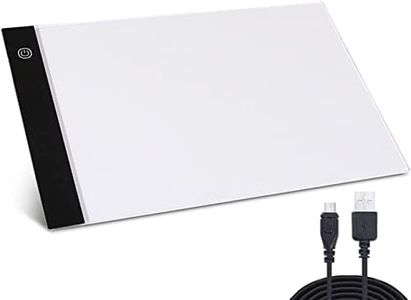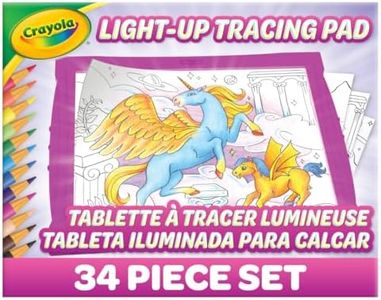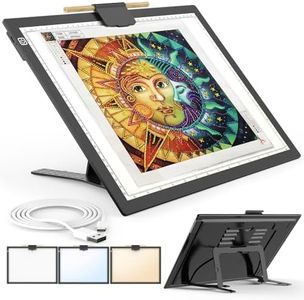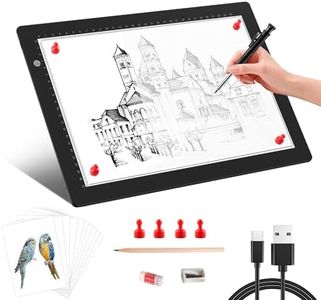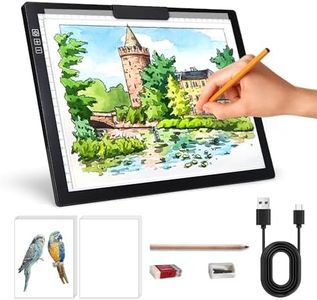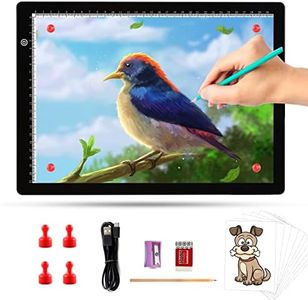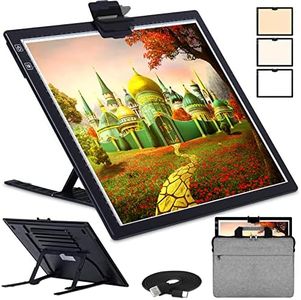We Use CookiesWe use cookies to enhance the security, performance,
functionality and for analytical and promotional activities. By continuing to browse this site you
are agreeing to our privacy policy
10 Best Tracing Light Boxes
From leading brands and best sellers available on the web.Buying Guide for the Best Tracing Light Boxes
When choosing a tracing light box, your main aim is to find a tool that makes it easy and comfortable to trace images, sketches, or designs while fitting smoothly into your workflow. The right light box should be easy on your eyes, provide enough brightness, be large enough for your projects, and be convenient to use whether you're at home or on the go. Always keep in mind how you'll regularly use the light box and the types of papers or materials you'll be tracing.BrightnessBrightness refers to how much light the tracing box emits, usually measured in lux or by the number of LED lights. This is important because a brighter surface makes it easier to see through thicker paper or multiple layers. Light boxes often offer adjustable brightness, letting you set it to a comfortable level for your needs. Lower brightness (up to around 2000 lux) works well for thin paper or shorter sessions, while higher brightness (over 4000 lux) is better for heavy paper and prolonged use. Choose a brightness level based on the thickness of the paper you use most and your environment—brighter for thick paper or well-lit rooms, lower if you use thin paper or work in dim spaces.
Size of the Working AreaThe working area size is the actual illuminated space where you place your paper. This matters because it determines the maximum size of the sheet you can comfortably trace without repositioning. Common sizes range from smaller A5 and A4 to larger A3 formats. Smaller boxes are great for portability or if you mainly trace smaller designs, cartoons, or letters. Larger sizes are better if you work with bigger sketches, posters, or architectural plans. Pick a size that matches the largest common paper you use most often.
Portability and WeightPortability is about how easy it is to carry and store the light box, and this is closely tied to its weight and thickness. Thinner, lightweight models are ideal if you travel for classes or often move between workspaces, while heavier or larger boxes may be best for stationary setups. Think about where you plan to use it—if you’re always on the go, look for slim and light designs, but if it stays on one desk, weight is less of a concern.
Power SourceTracing light boxes can run on USB, rechargeable batteries, or direct wall plug. The power source matters because it affects both convenience and where you can use it. USB-powered models can connect to power banks or laptops, making them versatile on the go, whereas plug-in types often ensure constant power for long sessions but need access to an outlet. If you prefer freedom to work anywhere, look for USB or battery options. For long, uninterrupted use at a desk, plug-in models might suit better.
Eye Protection and Flicker-Free LightingMany tracing light boxes now feature eye-protection technology like flicker-free or even lighting. This reduces eye strain and fatigue, especially during long sessions. If you’re sensitive to light or plan on using the light box for hours at a time, prioritize models with this feature. It helps prevent headaches and ensures a more comfortable experience.
Build Quality and Surface TextureThe build material and feel of the tracing surface influence how easy and pleasant it is to work. Smooth, sturdy surfaces provide even support for drawing or writing. Some light boxes have a lightly textured surface to prevent paper from sliding. If you use heavy hand pressure or work with multiple layers, a robust build is best. If you mainly sketch lightly, thinner models could suffice. Look for a surface that keeps your paper flat without damaging it.
